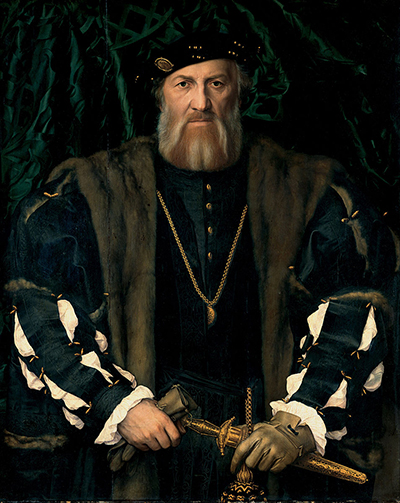Charles de Solier, Sieur de Morette is an oil-on-panel portrait of a French statesman that was painted by Hans Holbien the Younger, a native of the city of Augsburg, between the years 1534 and 1535. The German artist, who executed portraits of Renaissance Europe's most powerful and influential figures, created this painting while its subject was performing diplomatic duties in England.
Henry VIII, whose portrait Holbein would paint in 1540, was trying to secure French support for his decision to divorce Catherine of Aragon at the time in which the German painter preserved de Solier’s image for posterity with the strokes of his brush. The painting, measuring 925 centimetres by 755 centimetres, resides at the Gemäldegalerie Alte Meister art gallery in Dresden.
England and France, having signed a treaty in 1514, were at peace and Henry VIII sought Francis I's assistance against his enemies on the Continent. The French monarch sent de Solier, a distinguished gentleman and an honourable member of the royal chamber, across the Channel in order to negotiate with his English counterpart and Holbein may have received the commission to paint the French nobleman’s portrait from Thomas Cromwell. The Tudor king had appointed Cromwell, a leading proponent of the English Reformation, as his royal secretary in 1534 and the commissioning of paintings that advanced the English monarch's cause was among his chief responsibilities. This painting, in light of the day's events, may have served a political agenda.
The figure of de Solier, clutching a glove in his left hand while placing his gloved right hand upon the golden scabbard of a dagger, stands before an emerald-green curtain of expensive fabric. Green represents peace as well as new beginnings and could refer to the Anglo-French treaty, the recent emergence of an independent Church of England and the 1533 marriage of Henry VIII to Anne Boleyn. A flat cap, black and studded with gold, surmounts the French statesman's head while a gold chain rests around his neck. A pelt of animal fur, draped over both of the bearded envoy's shoulders, is worn over his black and buttoned shirt. Henry VIII had angered Charles V, Catherine’s nephew and Europe's most powerful monarch, and this painting captures the sense of hope that France would come to England’s aid.




